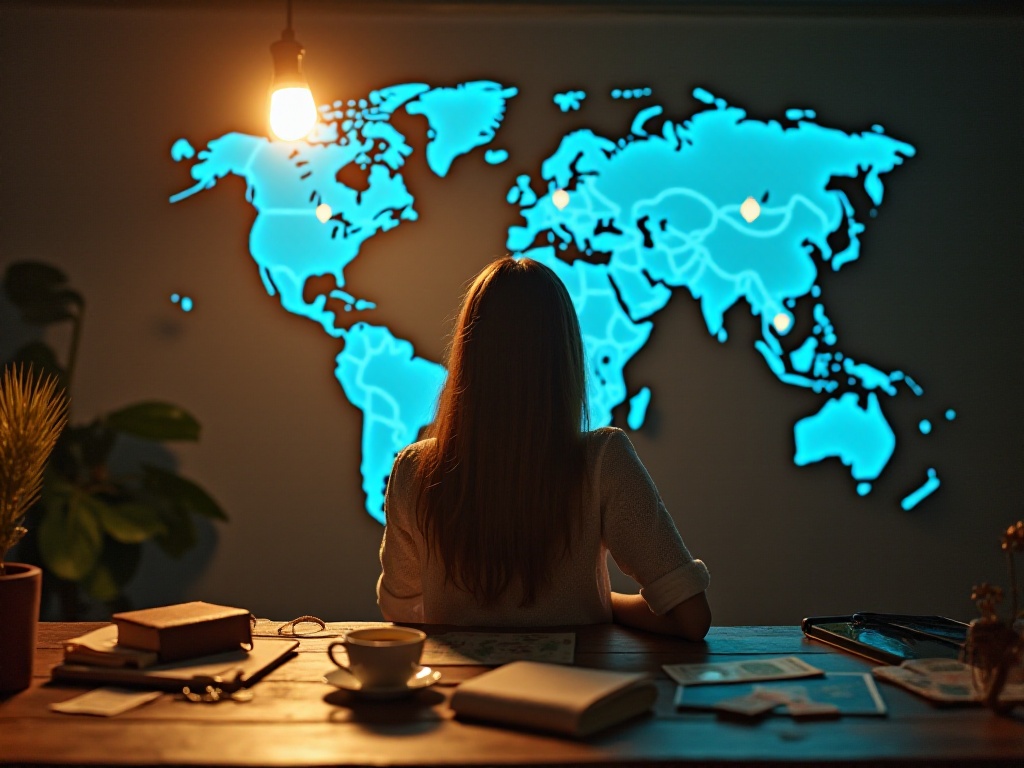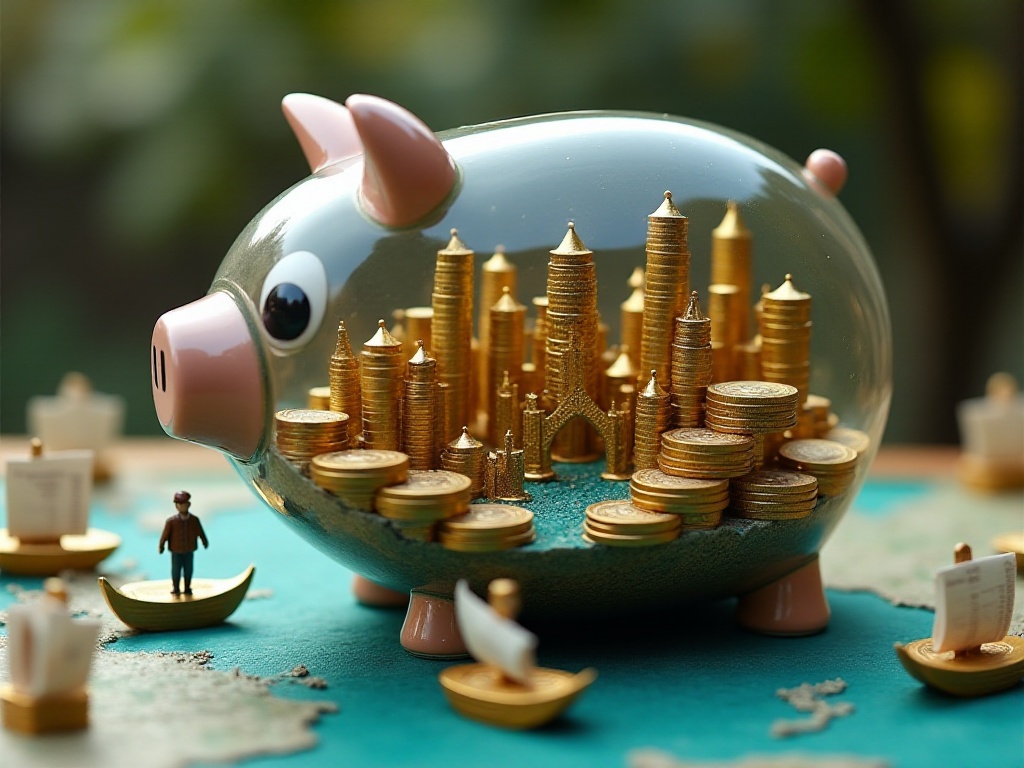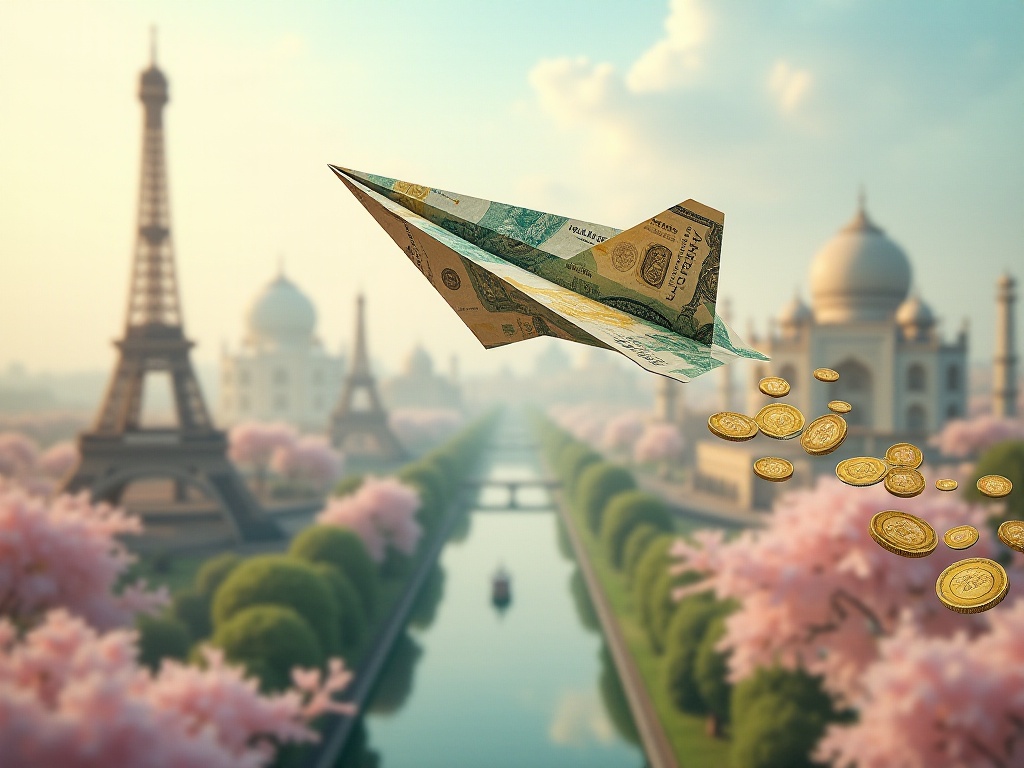Introduction
Hey backpackers! I'm travel blogger Little K. As a post-95 travel expert, I've explored over 40 countries on foot. Today I want to share a super practical topic - how to plan your travel budget. I still remember my first solo international trip when my amateur budget planning led to several embarrassing situations. In Chiang Mai, Thailand, I hadn't reserved enough cash and had to sleep in the hostel lobby for one night, then had to swallow my pride to borrow money from roommates the next day. Just thinking about it now makes me cringe! So today, let me help you avoid these pitfalls with my hard-learned lessons.
Budget Components
First, we need to clarify the ultimate question: how much budget do you really need for international travel? Based on my years of experience, travel budgets mainly consist of three parts: preliminary preparation costs, actual travel expenses, and emergency funds. Sounds simple, right? But the devil is often in the details.

Preliminary Preparation
I remember when I first prepared for my Southeast Asia trip, just the preliminary preparations made my wallet hurt. Visa fees alone cost 2000 yuan (Thailand, Malaysia, Singapore), and that was self-applied - using an agency would have cost an extra 500-1000 yuan. Travel insurance was 1000 yuan, which is absolutely essential - I have a friend who didn't buy insurance and had appendicitis abroad, which depleted all their savings for surgery.
Vaccinations were even more shocking, costing 3000 yuan for various shots. But this money was truly worth it, as I've personally seen fellow travelers in Africa develop high fevers from not getting vaccinated and having to end their trips early. Equipment purchases at 2000 yuan might not seem much, but this was just basic gear, including an anti-theft backpack (900 yuan), several quick-dry clothes (600 yuan), and a pair of waterproof hiking shoes (500 yuan).
Remember, these preliminary investments are essential and can't be skipped. Plus, many pieces of equipment are one-time investments that last a long time. For instance, my backpack has accompanied me through over 20 countries and still works great.

Actual Expenses
This part is definitely the most expensive but also the easiest to plan. Taking my European trip last year as an example, here's how I spent over three months:
Airfare was a major expense at 15000 yuan round trip. This was after hunting for deals for two whole months - during peak season, it easily exceeds 20000 yuan. For accommodation, I chose hostels, averaging 200 yuan per night. Honestly, this was quite economical, considering hostel beds in cities like Paris cost 300-400 yuan per night.
Daily food expenses averaged 200 yuan, and that's with me cooking frequently. In Europe, a casual restaurant meal starts at 20 euros, so I mainly bought groceries and cooked in hostel kitchens. Occasionally, I would treat myself to Michelin restaurants, as food is an important part of traveling.
Transportation costs were mainly for the Eurail Pass at 8000 yuan. This pass allowed me to freely ride trains across Europe for three months, which was amazing. Consider that last-minute train tickets in Europe easily cost hundreds of euros - this pass saved enough money for an extra month of travel.
Attraction tickets and activities totaled 12000 yuan, which was hard to reduce. For instance, the Louvre in Paris costs 17 euros, London Eye 30 pounds, Vatican Museums 16 euros... And many unique but characteristic experiences often cost more, like paragliding in Switzerland at 200 Swiss francs per session.
Emergency Funds
This is critically important! My experience in Italy was a harsh lesson. On a train from Rome to Florence, my backpack was stolen, containing my laptop (8000 yuan) and camera (12000 yuan). If I hadn't set aside 5000 euros for emergencies, I might have had to return home immediately.
You never know what unexpected situations you'll encounter. Last year in Iceland, due to a volcanic eruption, I had to change my flights and accommodation last minute, with change fees alone costing 3000 yuan. Now I always reserve 20% of my total budget for emergencies - better to have it and not need it than need it and not have it.
Smart Budgeting
Money-Saving Tips
Want to know how I managed a three-month European trip within an 80000 yuan budget? Here are lots of practical tips to share.
First, choosing travel timing is crucial. I always travel during off-season when there are fewer people and prices are much lower. For example, Paris hotel prices can differ by over 40% between peak and off-seasons. For flights, I usually choose Tuesday or Wednesday departures as these typically have the cheapest fares.
Next is transportation planning. In Europe, I always get a Eurail Pass. While the initial investment seems large, it's absolutely the most economical choice if you plan to visit multiple places. I calculated that buying individual tickets would cost over 20000 yuan just for transportation.
For accommodation, I have a unique money-saving technique. When booking hostels, I choose rooms with free cancellation and frequently check for cheaper special offers. If I find something cheaper, I cancel the original booking and rebook. This method saved me at least 30% on accommodation costs.
There's also lots of room for saving on food. For instance, I seek out local-recommended restaurants instead of tourist area establishments. In Paris, a meal in tourist areas costs at least 30 euros, but in residential neighborhood restaurants, you can enjoy more authentic French cuisine for 10-15 euros. Additionally, I make full use of hostel kitchen facilities - cooking not only saves money but also allows me to experiment with local ingredients.

Tracking Expenses
Did you know? According to recent surveys, over 60% of travelers exceed their budgets while traveling. To avoid this, I developed a super simple but practical tracking system.
Every night before bed, I spend 5 minutes recording all daily expenses on my phone. I categorize spending into several main categories: accommodation, transportation, food, entertainment, shopping, and others. This way, I can clearly see where my money is going.
I've found this habit also helps me identify unnecessary expenses. For instance, I discovered I was spending quite a bit on coffee in Venice, as a cup at St. Mark's Square costs 8 euros. After realizing this, I switched to drinking coffee at small shops near my accommodation, where it only costs 2 euros and the quality is still good.
Budget Categories
Short-Term Travel
For 7-10 day short trips, the budget structure is relatively fixed. Generally, transportation takes 30%, accommodation 35%, food 20%, and activities and shopping 15%.
Taking my recent 10-day Japan trip as an example, I spent a total of 15000 yuan. Round-trip airfare was 5000 yuan, accommodation was 350 yuan per night (I chose slightly better guesthouses since it was a short trip), totaling 3500 yuan. Daily food expenses were about 300 yuan, totaling 3000 yuan for 10 days. The remaining money went to transportation and shopping, mainly for the JR Pass (Japan Rail Pass), subway tickets, and purchasing cosmetics and snacks.
The advantage of short-term travel is that budgets can be controlled more precisely, as there are fewer variables with shorter time frames. The disadvantage is that daily average costs are higher, as fixed expenses (like airfare) need to be spread over a shorter period.

Long-Term Travel
Long-term travel is my specialty. For trips of three months or longer, the budget structure is completely different.
First, accommodation costs decrease significantly. Due to the longer duration, I usually choose monthly rentals or long-term stays, which can reduce daily accommodation costs to about half of short-term rates. For example, in Bali, short-term accommodation costs 300-400 yuan per night, but with monthly rentals, it's only 100-150 yuan per day.
Transportation cost proportions also decrease, as long-distance transportation costs (like international flights) can be spread over a longer period. However, daily living expense proportions increase, as you need to consider more practical life expenses like laundry, haircuts, and daily necessities.
Based on my experience, monthly expenses vary greatly by region. In Southeast Asia, 3000-5000 yuan monthly allows for comfortable living. This budget covers nice guesthouses, daily local cuisine, and occasional spa treatments. But in Europe, you need at least 15000-20000 yuan monthly to maintain a basic standard of living. Even staying in hostels and cooking your own meals, this budget is just barely sufficient.
It's particularly important to note that long-term travel requires more emergency funds. The longer the time, the higher the chance of unexpected situations. I usually set aside 25% of the budget for emergencies.
Final Thoughts
Through this lengthy sharing, I hope to give everyone a clearer understanding of travel budgeting. Remember, a travel budget isn't a restriction but a tool to make our travels more comfortable and relaxed. As I often say, a good budget plan is like a good map, showing you where you are, where you're going, and how to get there.
Years of travel experience have taught me that true travel isn't about how much you spend, but how you spend it. Sometimes the most memorable experiences are those that cost the least. Like watching sunrise by the Ganges in Varanasi, India, or camping under the stars in Morocco's Sahara Desert - these experiences are priceless.
By the way, do you have any unique travel budget tips? Feel free to share in the comments. If you found this article helpful, don't forget to share it with friends who also love traveling. Next time, we'll discuss how to choose the most suitable travel insurance, so stay tuned! Finally, I hope everyone finds their perfect way of traveling. Let's meet on the road!


